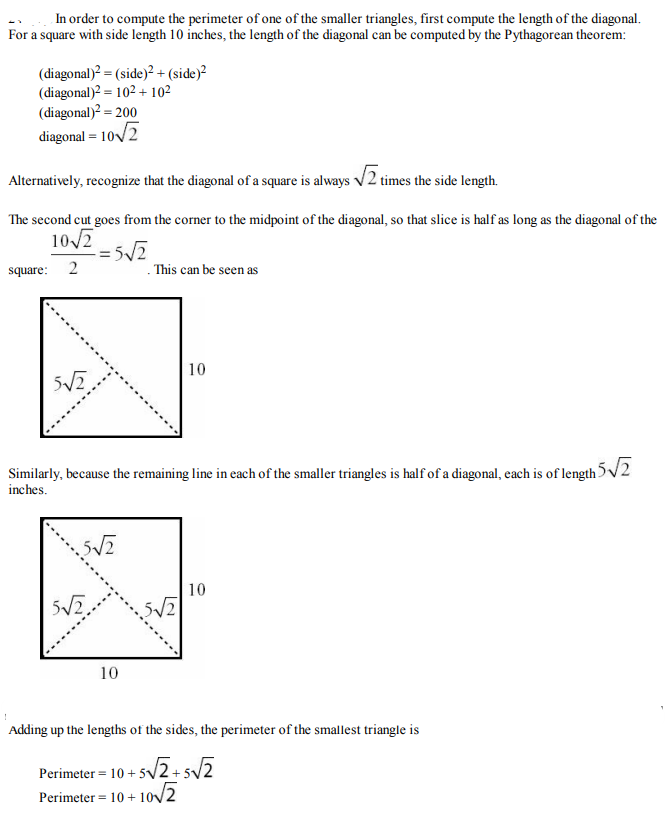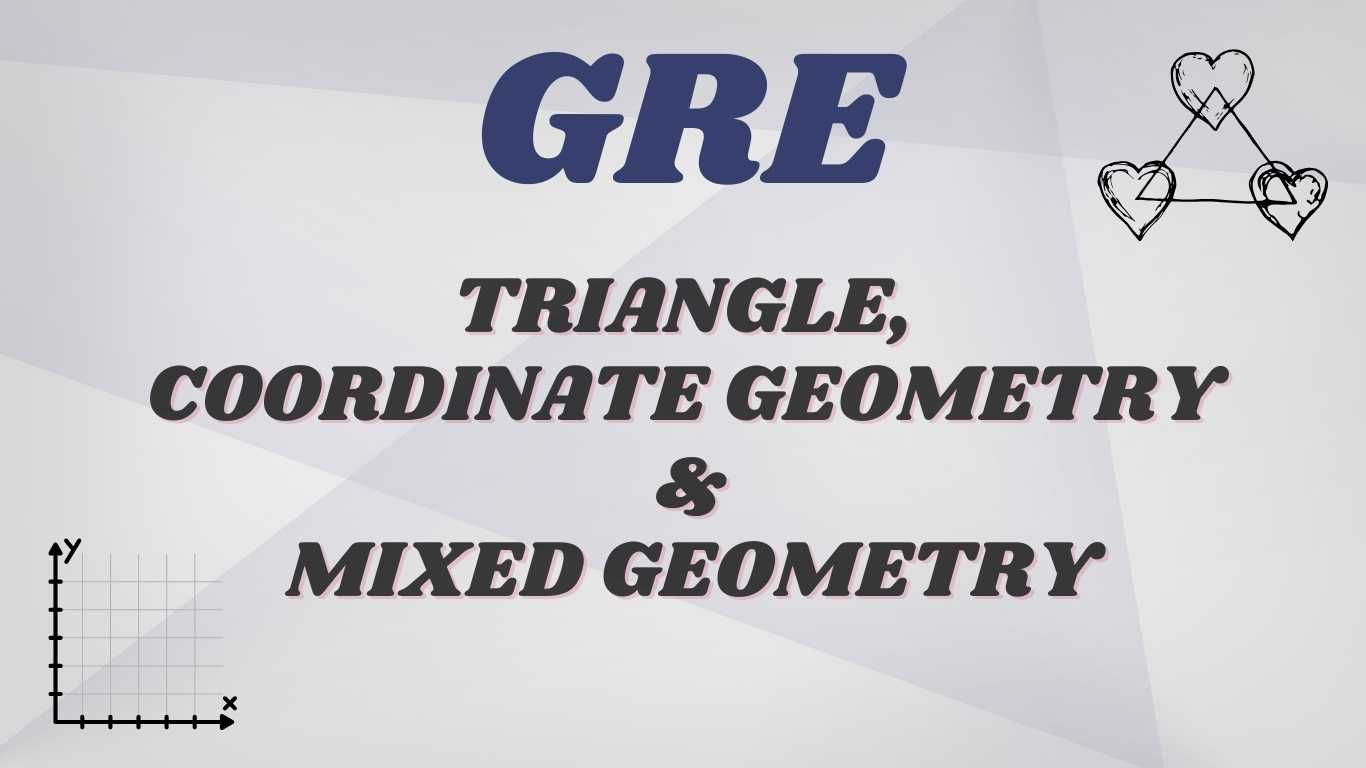Introduction
Geometry has been an integral part of mathematics for centuries, shaping how we understand the world around us. From the ancient Egyptians using geometry to build the pyramids, to the Greeks like Euclid, who is often referred to as the "father of geometry," these concepts have stood the test of time. In the GRE Quantitative Reasoning section, geometry continues to play a vital role, contributing around 20-25% of the total questions. While it may seem daunting at first, geometry is one of those subjects where practice pays off quickly. With the right approach, you’ll find that mastering geometry allows you to tackle questions confidently and efficiently. These problems are not only solvable with formulas but also with logical reasoning, and a solid understanding of geometry can truly help elevate your score. Embrace the challenge—geometry is a topic where you can see direct progress as you continue to learn and practice!
Geometry Topics
The GRE tests three main geometry topics: triangles, coordinate geometry, and mixed geometry. Let’s take a moment to appreciate the history behind each one and see how mastering them will give you the tools to succeed:
Triangles: Triangles are the building blocks of much of geometry and were studied by mathematicians like Pythagoras, who unlocked the famous Pythagorean Theorem, a cornerstone of mathematics. When you work with triangles on the GRE, you’re connecting with a long tradition of mathematical exploration. These questions might involve calculating angles, applying the Pythagorean Theorem, or working with special triangles like 30-60-90 or 45-45-90 triangles. By mastering triangles, you’ll find yourself solving these problems quickly, and with confidence—just as mathematicians have done for thousands of years.
Coordinate Geometry: This topic combines geometry with algebra, a combination that has been used since the time of René Descartes, who revolutionized mathematics by developing the Cartesian coordinate system. In this area of the GRE, you'll work with concepts like slope, distance, and the equation of a line. The beauty of coordinate geometry is that it gives you a visual understanding of math—where algebra meets geometry on the coordinate plane. It’s all about connecting numbers to shapes, and with practice, this will become second nature to you.
Mixed Geometry: As you dive into mixed geometry, you’ll encounter a variety of shapes and 3D figures—like circles, polygons, and solids. Geometry in this sense isn’t just about flat shapes but also about understanding space and volume. From the ancient Greeks and their study of spheres to modern-day architects calculating the volume of cylinders and cones, mixed geometry has practical applications that span from art to engineering. These questions are designed to test your ability to apply various geometric concepts in real-world scenarios, and each one is a step toward mastering this field of mathematics.
Just like the great mathematicians who paved the way, your journey through these geometry topics will not only prepare you for the GRE but also strengthen your problem-solving skills. With dedication and practice, you’ll build the confidence to approach any geometry problem with ease, drawing from the rich history of geometry to solve modern-day challenges.
Triangles
Short Note
Triangles are the foundation of geometry—literally! Architects use them to build strong bridges, and ancient Egyptians used them to construct the pyramids. The Pythagorean Theorem is over 2,500 years old, and yet it still helps us solve GRE problems today. The moment you master triangle properties, half your GRE geometry struggles will vanish!
Tips: How to Tame the Triangle Beast
Memorize the Pythagorean Theorem: If you see a right triangle, your brain should instantly say:

Special Triangles Save Time: If you spot 30-60-90 or 45-45-90 triangles, you don’t need Pythagoras—just remember their side ratios!
The Longest Side Faces the Largest Angle: Always check your angles—bigger angles mean bigger sides!
If in Doubt, Draw It Out: Even if the question doesn’t give you a diagram, sketching makes problem-solving 10x easier.
Think of Triangles as Pizza Slices: The more equal slices (equilateral), the fairer the distribution. But if it’s a right triangle, one slice is hogging the best piece!
Example with Step by Step Solution
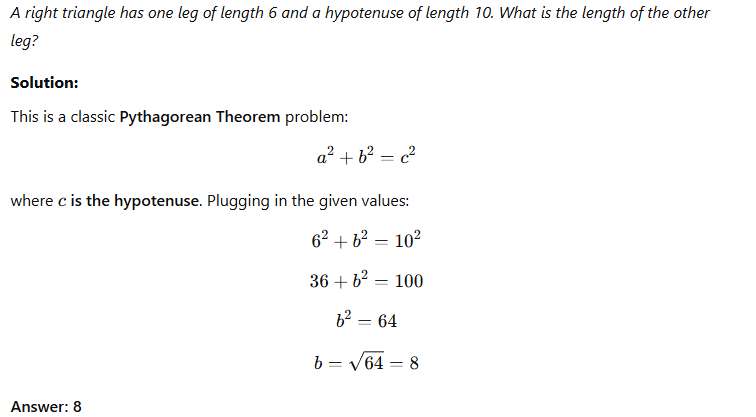
Coordinate Geometry
Short Note
Coordinate geometry is where math meets maps! It helps self-driving cars stay on track, lets Google Maps find your location, and even makes video game graphics work. The GRE won’t make you design a game, but it will test your ability to navigate the x-y plane like a pro.
Tips: Crack the Coordinate Code
Slope = The Attitude of a Line:
- Positive slope? Line’s going uphill (good mood).
- Negative slope? Line’s going downhill (bad mood).
- Zero slope? Flat, relaxed line (chilling).
- Undefined slope? Straight up & down, dramatic exit!
The Slope Formula is Your Compass:

Always subtract the y’s over the x’s—mess it up, and you might take a wrong turn!
Midpoint Formula: The Meeting Spot:
If two friends are at (x1,y1) and (x2,y2), they can meet halfway at:

Great for dividing pizza (or GRE problems) fairly!
If It’s Too Hard, Plot It: Visualizing points, slopes, and equations makes tricky problems 10x easier.
Example with Step by Step Solution
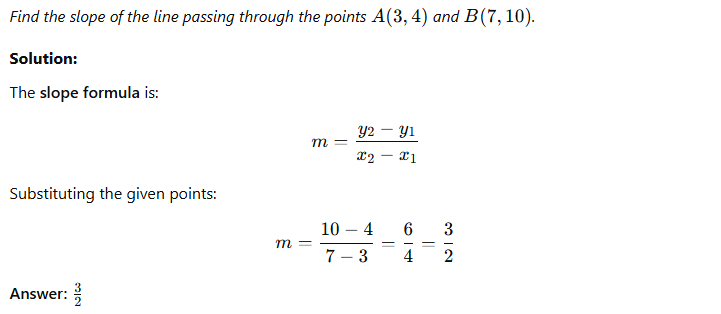
Circles
Short Note
From the moon to your pizza, circles rule the world. Pi (π) is an ancient number that never ends—just like your love for snacks! The GRE will ask you about radius, diameter, area, and circumference, so make sure you don’t go in circles while solving.
Tips: Make Circles Your Best Friend
Memorize These Like Your Favourite Song Lyrics:
- Area: A=πr^2
- Circumference: C=2πr
Diameter is Just Two Radii: If you know the radius, you know the diameter—double it!
Semi-Circle = Half the Fun: If a question asks about a semicircle’s area, divide by 2—don’t let them trick you!
Always Check If You Need Pi in Your Answer: Some answers leave it in terms of π, while others make you calculate it as 3.14.
Example with Step by Step Solution
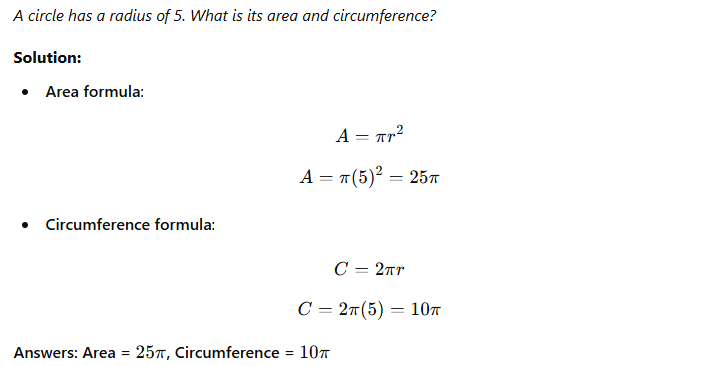
Polygons
Short Notes
Triangles are the coolest, but polygons are their big brothers—with extra sides and extra drama! Squares, pentagons, and hexagons are all part of the crew, and they each have their own set of rules. If you know how to handle one, the rest are just different flavours of the same math.
Tips: Decode Polygon Mysteries
Interior Angle Sum Formula:

For example, a hexagon (n=6):

Exterior Angles Always Add Up to 360°: No matter how many sides a polygon has, its exterior angles always sum up to 360°—a trick to keep in your back pocket!
When in Doubt, Count the Sides: GRE loves sneaky diagrams—always double-check the number of sides before solving.
Example with Step by Step Solution
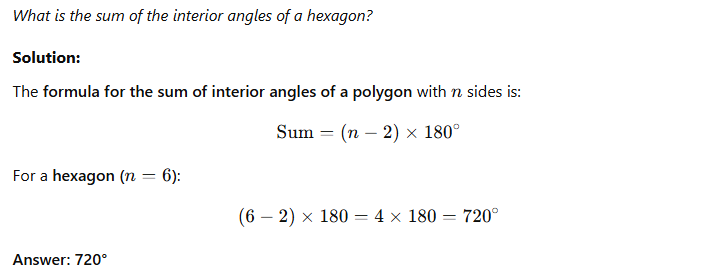
3D Geometry
Short Note
3D shapes are not just textbook drawings—they're the world around us! Cylinders = soda cans, spheres = basketballs, and cones = ice cream (a very important shape). The GRE will test how well you can calculate volume and surface area, but don’t worry—you got this!
Tips: Make 3D Geometry Fun (and Easy!)
Memorize These Like a Cheat Code:
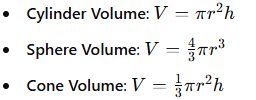
Volume = How Much Liquid Fits Inside: If you’re confused, just imagine how much water (or soda) could fit inside!
Surface Area = The Amount of Wrapping Paper Needed: If you had to wrap a cube or cylinder, that’s its surface area.
Don't Forget to Cube Your Units for Volume: If the problem asks for volume, your answer should be in cubic units—not square units!
Example with Step by Step Solution

Some GRE Problems with Step by Step Solutions
Question 1

Solution:

Question 2

Solution:

Question 3
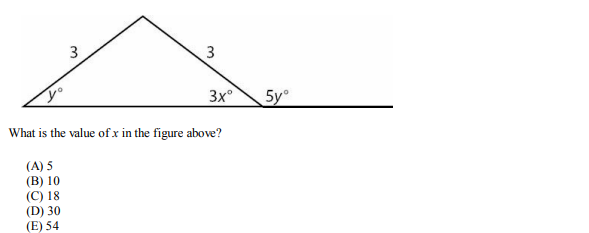
Solution:
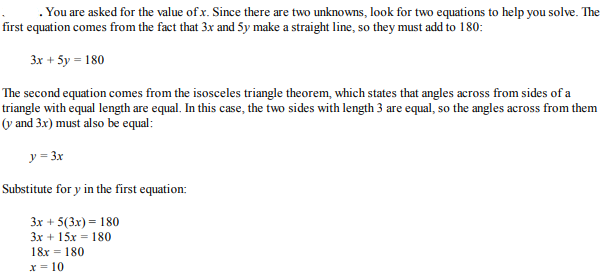
Question 4

Solution:
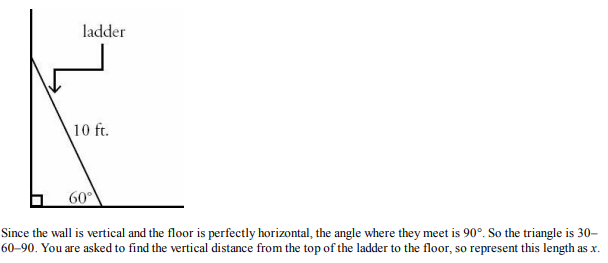
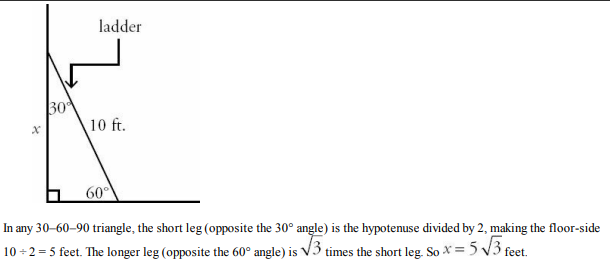
Question 5
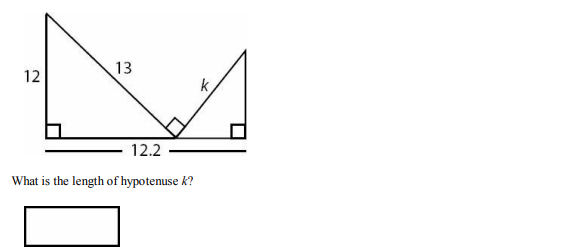
Solution:
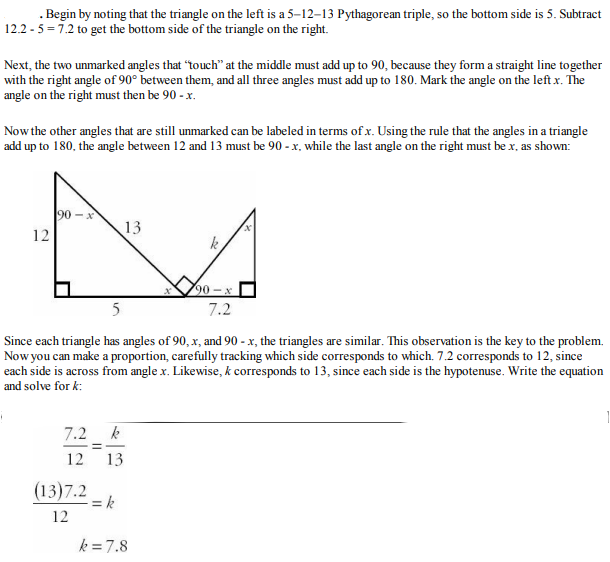
Question 6

Solution:
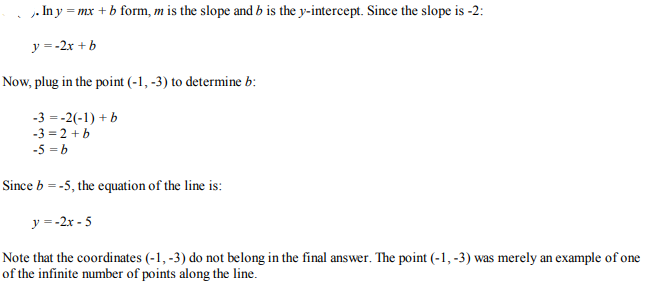
Question 7

Solution:
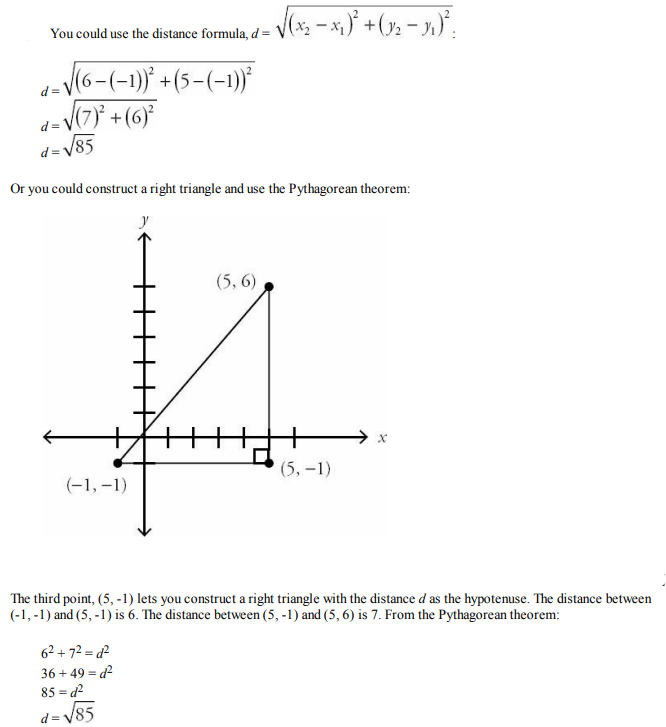
Question 8
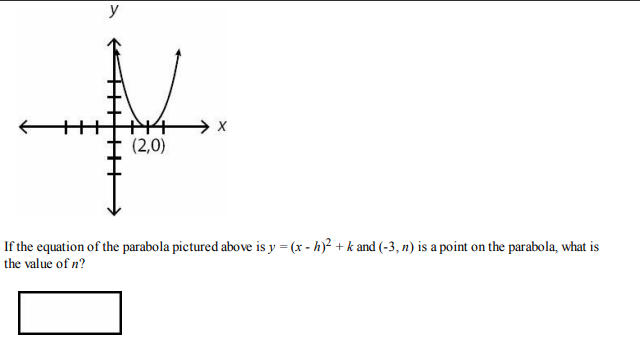
Solution:
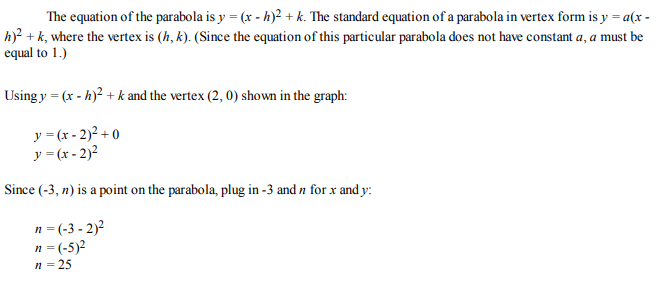
Question 9

Solution:

Question 10
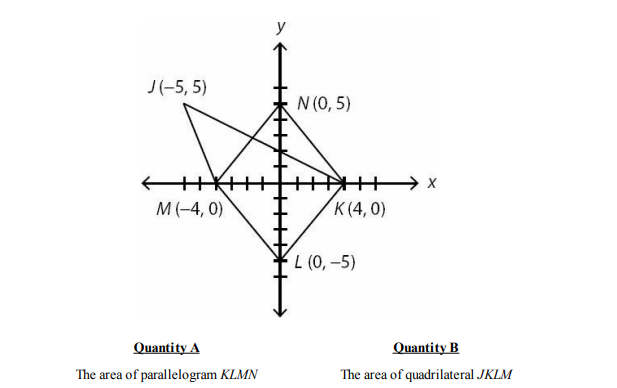
Solution:

Question 11
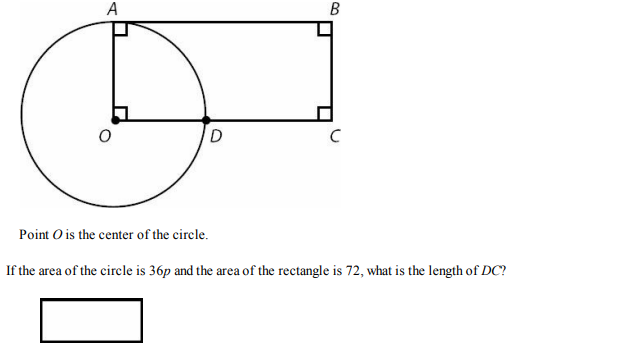
Solution:

Question 12

Solution:

Question 13
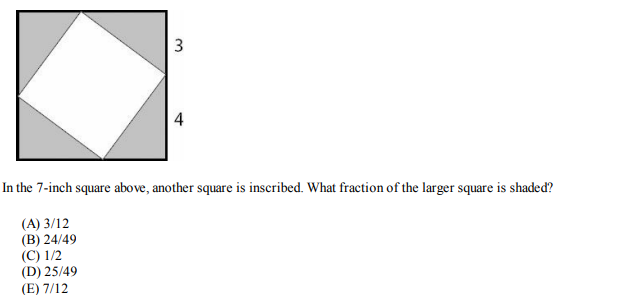
Solution:

Question 14
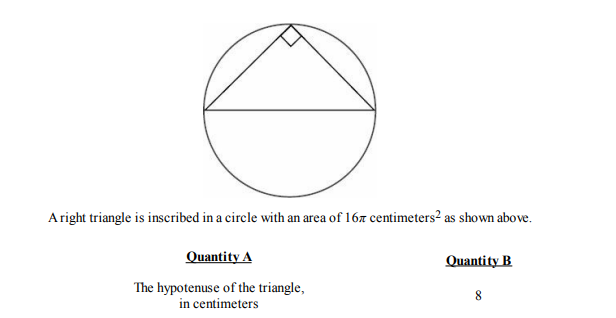
Solution:
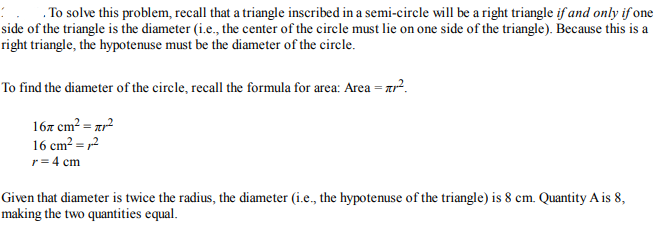
Question 15
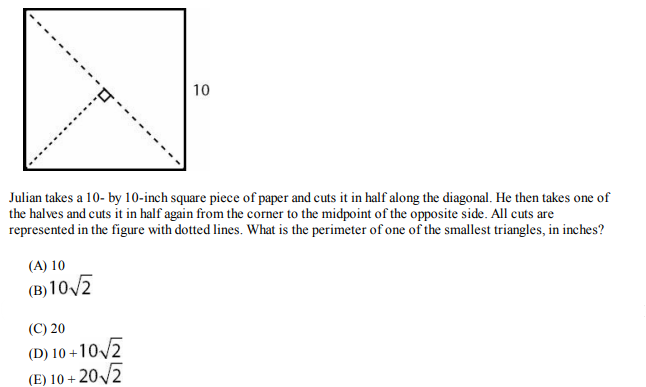
Solution:
